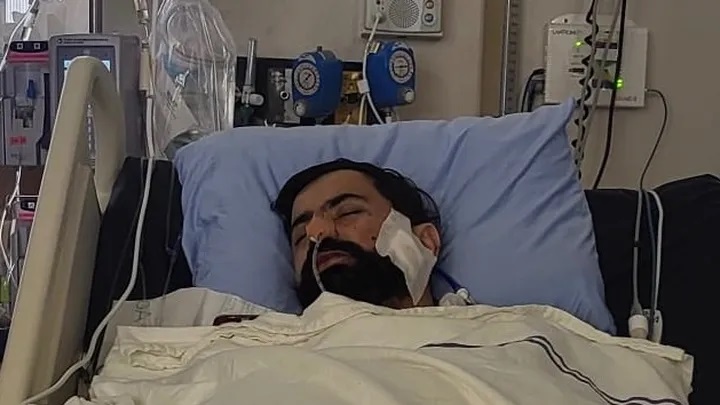Part 6: Basilians refuse to answer questions about alleged pedophile priest moved through Catholic schools
Posted October 16, 2020 11:01 am.
Last Updated October 21, 2020 12:32 pm.
CAUTION: This story contains graphic content related to allegations of sexual assault and might be upsetting to some readers.
If you or someone you know are victims of sexual violence, you can contact Crisis Services Canada, a 24/7 hotline, at 1-833-456-4566 or you can find local support through the Ontario Coalition of Rape Crisis Centres; The Government of Canada has also compiled a list of sexual misconduct support centres. If you are under 18 and need help, contact the Kid’s Help Phone online or at 1-800-668-6868.
To keep children safe from sexual abuse, the Catholic Church needs to go beyond rules and re-think the way it’s run, says one of Canada’s leading experts on clergy abuse.
“The clergy sexual abuse crisis has unrolled as it has, not because people didn’t pay attention to Church beliefs, tradition and regulation, but in fact because of those rules and regulations,” says Sister Nuala Kenny, a Catholic nun and pediatrician who has been on the frontlines of the sex abuse crisis in Canada for four decades.
CityNews has been investigating the stories of multiple people who say they were sexually assaulted by priests as children. All the priests in question belong to a Catholic order called the Basilian Fathers, also known as the Congregation of St. Basil, whose headquarters is in Toronto.
We reached out to Basilian Vicar General Father David Katulski, who victims are instructed to contact should they have a sexual assault claim. He is also the order’s media contact. Instead of hearing back from Fr. Katulski, we received an email from the Basilians’ longtime lawyer, who turned down our interview requests.
“Historically, it’s deeply problematic because of the secrecy and silence,” Sr. Kenny says. “As long as you’re holding on to ‘We have to protect the image, and protect the institution, and institutional reputation and offender reputation,’ you can’t make amends in this way.”
Eventually, CityNews submitted questions to be answered on the record. The order declined to answer any about specific individuals or events. Their lawyer did forward a statement addressing some of our questions about policy and the history of the Church’s understanding of sex abuse.
Full response from the Basi… by CityNewsToronto
No stranger to speaking to bishops and priests on the issue, Sr. Kenny believes the Basilians’ reluctance to discuss the issue highlights a systemic silence within the Church.
“They have to be able to sit and openly acknowledge what happened, confess and express their attempts at atonement,” she says.
Pope Francis recently called for openness and transparency from Catholic Churches across the globe.
CityNews asked the Basilians how many of their priests have been involved in child sex abuse settlements. They refused to answer the question. Our investigation has found at least 14 Basilians who have been accused or convicted of sexual misconduct with a child. Two are on U.S. church lists of clergy accused of sexual misconduct involving minors, and three have been criminally convicted in Canada.
“There has never been any doubt or misunderstanding that sexual abuse of a child is, and always has been, wrong,” the Basilians write in their statement to CityNews. “Where there has been historical misunderstanding by professionals, the Basilians included, is with respect to the impact of sexual abuse upon a child.”
The statement says there was a historical belief that children wouldn’t remember sexual abuse or be impacted by it. They also say a lack of understanding of attraction to children, contributed to the thinking that sex abuse “was a moral failing, and could be addressed by deeper spiritual focus and commitment.”
There is no way to know how many of Canada’s more than 7,000 priests have been accused of having sexual contact with children, or how the Basilians stand in relation to other Church organizations. Research into U.S. priests indicates the rate of sexual abusers in the clergy is about the same as the general population – four per cent. However, it’s how cases have been handled that has alienated the general public and Catholics alike.
“I understand why for many this has been a source of them leaving the Church,” says Sr. Kenny.
For more than a millennium, the Catholic Church has explicitly said child sex abuse was a sin, explains Sr. Kenny. Its earliest written code of rules state if a priest abuses a child, he is to be “declared infamous” and could be banned from the priesthood. However, the rules themselves — along with other protocols for investigating allegations – were secret.
“For Catholics, it was once unthinkable that priests would abuse children,” writes Canadian Bishop Ronald Fabbro in a 2018 report on the sex abuse crisis. “This culture of disbelief affected the whole Church.”
In February 2019, Pope Francis convened the Church’s first-ever global summit on the child sexual abuse crisis. There, he asked leaders to “listen to the cries of the little ones” and released 21 points for better treatment of abuse accusations. They include instructions to churches to have manuals for handling allegations, to inform civil and church authorities whenever an accusation is made and to establish mandatory codes of conduct and background checks.
Many of the pope’s recommendations are already standard in Canada, part of the institution’s response to an unprecedented wave of allegations against the Church in Newfoundland in the 1980s. Back then, Canadian Catholic leaders formed a committee to study the issue and offer solutions. Sr. Kenny was part of that group, which released a landmark report, From Pain to Hope, in 1992.
“The ideal breeding ground for the development and repetition of child sexual abuse is a general conspiracy of silence, motivated by the fear of scandal and of major repercussions for the institutions,” the report states.
The authors go on to say that keeping silent has the effect of “inadvertently protecting the perpetrators” instead of the children who are powerless to defend themselves.
The situation prompted many church organizations to acknowledge the problem and develop their first sex abuse policies. The Basilians introduced theirs in 1991.
In their statement, the Basilians say they “have adopted policies that reduce or negate opportunities for potential abuse.” Those include not being alone with children or vulnerable people in private settings, no one-on-one trips and background checks. The order also pays for some counselling for victims and has classes on conduct and boundaries for priests.
When Peter Luci came forward with allegations against Fr. Leo Campbell in 2008, the Basilians followed their sexual abuse policy and appointed a designated priest, called a “Promoter of Justice” to investigate the allegations.
The policy states the investigating priest should express concern for the victim and offer them six months of therapy. If an allegation involves a minor, the accused priest should immediately be placed on administrative leave. If the allegation is historical, the priest should be prevented from having access to minors while the Basilians’ conduct their investigation.
“The Congregation will make every attempt to achieve the delicate balance of openness, so that justice can be seen to be done, and confidentiality, to which both complainant and respondent have strong interests and rights, will be ensured,” reads a copy of their policy from the time Luci came forward.
“We’ve done lots with policies and protocols, especially in the Church, but we hadn’t gotten at these underlying issues,” says Sr. Kenny.
Researchers have not been able to pinpoint the cause of the dramatic increase of abuse cases between the 1950s and the 1980s. However, Sr. Kenny says the Church’s bureaucracy, its rules about celibacy and women’s roles, and the way priests were historically selected and trained have all played a part.
Becoming a priest and a man
About 85 per cent of offending Catholic priests are situational offenders, says Sr. Kenny.
“These are men who have had sexual immaturity, confusion about their sexuality, and entered the priesthood young, without their psychological and psychosexual development completed,” she says, “Especially if you came from a junior seminary where you never dated.”
Historically, men applied to the priesthood in their teens or early 20s. As it was for Basilians, all prospective priests entered a life designed to hold them apart from the secular world, surrounded foremost by other men also training for the priesthood. For those young men, the opportunity to have formative social experiences was cut short.
“Part of the dynamics of the abuse with celibate males was their total misreading of the activities,” says Sr. Kenny. “When a nine-year-old girl jumps in her daddy’s lap and puts her arms around him, and snuggles into him, there’s physical contact, but a good dad recognizes it for what it is.”
As early as the 1950s, the Pope recognized that more care needed to be taken in selecting mature priests, directing gatekeepers not to be hasty in admitting men to the vocation. By the 1960s and 70s, studies of priests and recruits found that as many as three-quarters were psycho-sexually immature.
The issue has been acknowledged by the Canadian Conference of Catholic Bishops, and some religious orders have changed recruiting practices. The Basilians, for instance, now look for candidates who are in their 40s and have a bachelor’s degree or can study at that level. Once they’re accepted, the order provides ongoing guidance on friendship, intimacy, psychosexual development, and religious chastity and celibacy, as well as addiction and sobriety.
The Basilians say their recruitment policy “is much more rigorous than it was years ago. There is better screening of candidates, including psychological assessments, before proceeding to vows.” Recruitment criteria on the order’s website state applicants “must give evidence of emotional and physical health as well as an ability to relate to others and to work with them in the service of the People of God.”
Push for more women and married priests
Sr. Kenny says other reforms have been non-starters, including expanding the role of women and abolishing mandatory celibacy for priests.
“Mandatory celibacy for parish priests in this day and age is unhealthy,” she says.
As a nun, Sr. Kenney, who is in her 70s, is celibate. She explains that celibacy isolates priests, encouraging loneliness and taking away the potential for a partner who can emotionally support them. It also estranges priests from the everyday Catholics they serve.
“It has always been amazingly astounding to me that priests are supposed to counsel married couples and assist them in the problems of married life or wild teenagers, or unfaithful affairs, when they themselves have no experience,” she notes.
“Make me pope for a day and I will get rid of the male celibate priesthood. I think you would see a substantial change in the Church, not just in recruiting, in accountability in sexual assault and relevance.”
The Roman Catholic Church only required priests to be celibate starting in the 11th century, says Sr. Kenny, and she takes issue with those who characterize it as an essential part of priesthood.
Lawyer Rob Talach has a front row seat to the sexual assault crisis rocking the Catholic faith. He’s handled more than 400 civil sexual assault cases against the Church. He tells CityNews: “Make me pope for a day and I will get rid of the male celibate priesthood. I think you would see a substantial change in the Church, not just in recruiting, in accountability in sexual assault and relevance.”
Calls from within the Church to end mandatory celibacy go back decades, yet Pope Francis skirted the issue again this winter, even while faced with a shortage of priests in some parts of the world.
In February, Francis dodged an opportunity to consider recommendations for married priests and women deacons. It disappointed progressive Catholics, who had hoped he would at least put both questions to further study. It outraged liberal Catholic women’s groups, and it relieved conservatives who saw his ducking of the issue as a victory.
“The role of women in so many ways, having been marginalized in the Church, has led to background issues that allowed the abuse to occur, or allowed it to occur with inadequate response for so long,”
Bishops also urged the Vatican to reopen a commission on ordaining women as deacons (a role Sr. Kenny notes they historically occupied) which allows for preaching, celebrating weddings and baptisms. Francis had created such a commission in 2016 at the insistence of nuns who want larger roles in church governance and ministry, but the group ended its work without reaching consensus.
“The role of women in so many ways, having been marginalized in the Church, has led to background issues that allowed the abuse to occur, or allowed it to occur with inadequate response for so long,” says Sr. Kenny, but she cautions that simply slotting women into the existing hierarchy wouldn’t be effective.
Pulling priests off their pedestals
“I’ve met some good priests, many good priests, who’ve done it for the right reasons,” says Talach. “But there is a percentage that is attracted to that role, that gives them absolute power, almost demi-god power, in the eyes of these young believers.”
The authors of From Pain to Hope note priests exercise “considerable authority over the day-to-day lives of their communities.”
“This excessive power, unchecked by any kind of social control, placed certain individuals beyond the reach of legitimate questioning and made it possible to prevent detection. The fact that priests were placed on a pedestal was actually a kind of trap.”
“How did it happen that the issue of power and hierarchy began to in fact be focused on protection of image and institution, rather than protection of the most vulnerable?”
To address why so many in the Church hierarchy didn’t speak out or act when presented with allegations of abuse, Sr. Kenny believes the Church must examine how priests and officials relate their communities.
“How did it happen that the issue of power and hierarchy began to in fact be focused on protection of image and institution, rather than protection of the most vulnerable?” she asks.
The Church must “heal these abuses of power and privilege” Sr. Kenny says. “These are attitudes that in fact require what Pope Francis calls deep conversion.”
In the wake of the sex abuse summit, in December 2019, Francis stripped internal tribunals of “pontifical secrecy.” In some cases, the standard had been used by Church leaders to avoid reporting allegations to authorities, and to muzzle victims and whistleblowers.
Survivors like Peter Luci are calling on the Church, including the Basilians, to have meaningful public discussions with victims.
“I would just like them to have accountability and transparency. Enough with the secrecy, enough with the hiding,” he says. “They’re not going to survive if they continue in this path.”
With files from the Associated Press








